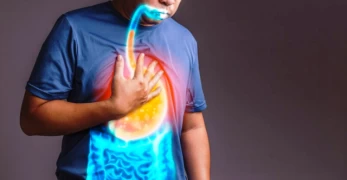
Laser Applications in Pilonidal Sinus Treatment
- Laser Applications in Pilonidal Sinus Treatment
- What is Pilonidal Sinus?
- What is the Pathophysiology of Pilonidal Sinus?
- What are the Symptoms of Pilonidal Sinus?
- What are the Treatment Options for Pilonidal Sinus?
- Laser Applications in the Treatment of Pilonidal Sinus
- Principle of Laser Therapy
- Application of Laser Therapy
- Advantages of Laser Therapy
- Disadvantages of Laser Therapy
- In Conclusion…
- References
Today, I will provide information about pilonidal sinus and delve into the laser applications used in the treatment of this condition.
What is Pilonidal Sinus?
Pilonidal sinus, commonly referred to as a "pilonidal cyst," is a health condition that typically occurs in the sacral region (tailbone area), affecting the skin and subcutaneous tissue. This condition arises when hairs penetrate the skin and accumulate, leading to infection. Pilonidal sinus is particularly common among young adults and individuals who spend long periods sitting.
What is the Pathophysiology of Pilonidal Sinus?
To fully understand how pilonidal sinus develops, it is essential to examine its pathophysiology. The primary mechanism involves the growth of hairs beneath the skin, causing inflammation. Factors such as trauma, tight clothing, prolonged sitting, and poor hygiene can trigger the penetration of hairs into the skin. These hairs accumulate under the skin, leading to the body's inflammatory response.
What are the Symptoms of Pilonidal Sinus?
The most common symptoms of pilonidal sinus include pain and tenderness in the tailbone area, swelling and redness under the skin, abscess formation, and discharge from the skin (pus or blood). In some cases, abscess formation may lead to systemic symptoms such as fever and general malaise.

What are the Treatment Options for Pilonidal Sinus?
Treatment options for pilonidal sinus vary depending on the severity of the condition and the patient's overall health. These options range from conservative approaches to surgical interventions.
- Conservative Treatment: In the early stages of pilonidal sinus and in cases without complications, conservative treatment methods may be applied. These methods are generally aimed at alleviating symptoms and controlling the infection.
- Hygiene and Cleanliness: Keeping the tailbone area clean and dry is a fundamental step in the prevention and treatment of pilonidal sinus. Regular washing of the area and the use of antibacterial soaps are recommended.
- Shaving and Hair Removal: Regular shaving or hair removal of the affected area can prevent new cases of pilonidal sinus.
- Antibiotic Therapy: If signs of infection are present, appropriate antibiotic therapy may be initiated based on the doctor's recommendation.
- Minimally Invasive Methods: Minimally invasive methods can also be effective in the treatment of pilonidal sinus. These methods are less painful and offer a faster recovery process.
- Laser Therapy: Laser therapy involves closing the sinus tracts using laser energy. This method is effective in preventing recurrent cases of pilonidal sinus and stands out as a minimally invasive option.
- Phenol Injection: Phenol, a chemical solution, can be used in the treatment of pilonidal sinus. The goal is to destroy the sinus tracts by injecting phenol. This procedure can be performed under local anesthesia, and patients usually return to their daily activities quickly.
- Surgical Methods: Surgical interventions are preferred in advanced stages of pilonidal sinus or in recurrent cases.
- Incision and Drainage: In cases of infection and abscess formation, a small incision is made to drain the abscess. This procedure is typically performed under local anesthesia.
- Excision and Primary Closure: The affected area is completely removed, and the wound edges are brought together and closed. This method can be applied in non-infected or recurrent cases.
- Excision and Secondary Healing: The affected area is removed, and the wound is left open to heal naturally. This method may be preferred in infected cases and requires a longer healing period.
- Flap Surgery: This method, which involves repositioning a portion of the skin and subcutaneous tissue, is applied in large and complex cases of pilonidal sinus. Flap surgery accelerates wound healing and reduces the risk of recurrence.
Laser Applications in the Treatment of Pilonidal Sinus
While surgical interventions are among the classic methods in the treatment of pilonidal sinus, laser applications have gained popularity in recent years. Laser therapy is a minimally invasive method, often preferred due to its rapid recovery process and low complication rates.
Principle of Laser Therapy
In laser therapy, the sinus tracts created by hairs are closed using laser energy. The laser light facilitates the replacement of damaged tissues within the sinus tracts with new ones.
Application of Laser Therapy
Laser therapy is usually performed under local anesthesia and involves several steps:
- Preparation: First, I clean the treatment area with antiseptic solutions.
- Laser Application: The laser probe is inserted into the cleaned sinus tract, and the laser is activated at a power of 10 watts to close the tract. This procedure may take a few minutes.
- Post-operative Care: After treatment, it is important to keep the area clean and follow my instructions for dressing the wound. Multiple sessions may be required for the laser application to be effective.
Advantages of Laser Therapy
- Minimally Invasive: No surgical incisions are made, so the recovery time is short.
- Low Complication Rate: Risks of infection and scarring are minimal.
- Rapid Recovery: Patients can quickly return to their daily activities after treatment.
- High Success Rate: It is effective in preventing recurrent cases of pilonidal sinus.
Disadvantages of Laser Therapy
- Cost: Laser therapy can be more expensive than surgical methods.
- Need for Multiple Sessions: Multiple sessions may be necessary for the treatment to be effective.
- Accessibility: The availability of laser devices may be limited in some healthcare facilities, restricting access to treatment.
In Conclusion…
Pilonidal sinus is a condition that can significantly impact quality of life and may lead to serious complications if left untreated. Laser applications offer a minimally invasive, effective, and safe option in the treatment of pilonidal sinus. However, like any treatment method, laser therapy has its advantages and disadvantages. It is important for patients to thoroughly evaluate their treatment options with their doctors before making a decision.
References
- Current Approaches in the Treatment of Pilonidal Sinus Disease - Medical Journal, 2023.
- Dermatological Uses of Laser Therapy - Dermatology Journal, 2022.
- Minimally Invasive Surgery and Laser Applications - Surgical Sciences Journal, 2021.

Op. Dr. Sedat Ocak
General Surgery Specialist





